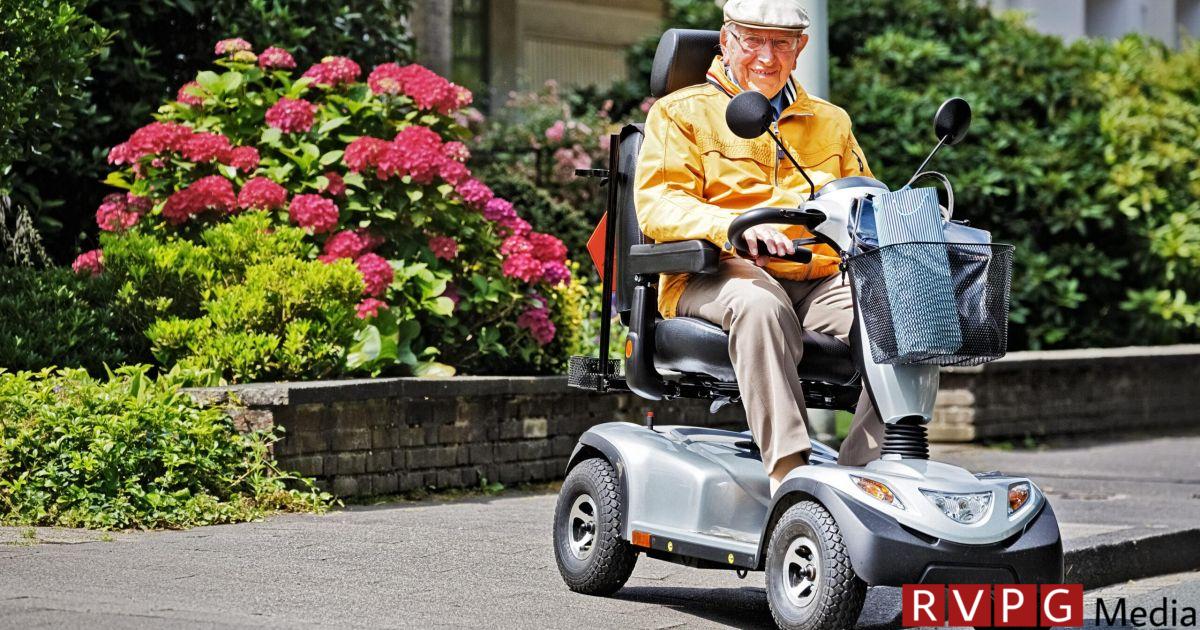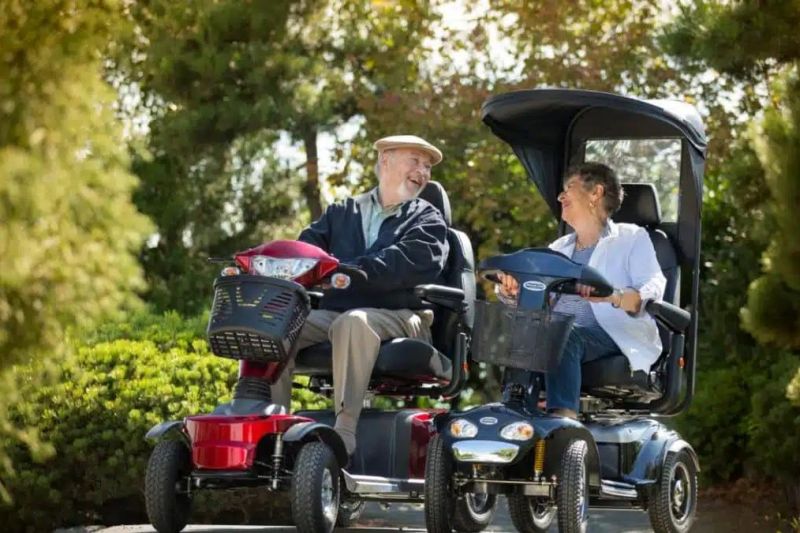Mobility scooters – also known as buggies or gophers – are an excellent way for less mobile people to get around.
- Electric scooters are allowed to be driven in traffic – but only under certain conditions
- A gopher is not a car – and it should not be treated as such
- These devices are intended to help people with mobility problems and not to serve as a replacement for a car or a car
Whether it’s going shopping, meeting friends or family, or just getting out and about, these devices are enabling people to live healthier, longer lives because research shows isolation is a silent killer for those who don’t can get out about as much as before.
However, there is another aspect to these motorized devices. According to the Australian Institute of Health and Welfare (AIHW), more than 1000 people are hospitalized each year across Australia due to electric scooter accidents.
Many of these are due to misuse of the devices, where users improperly operate their scooters in conditions that are outside of laws and regulations.
In fact, the report states “Injuries and deaths related to electric scootersAccording to AIHW, 64 percent of all scooter deaths were due to other vehicles such as cars, trains or trucks. This does not necessarily mean that these users were driving on the road when they were hit, but rather that they may have been crossing a road and were hit and killed.
In any case, electric scooter users must be aware of the rules they must comply with in Australia. The AIHW states that nationwide, a person who uses an electric scooter is “considered a pedestrian if the electric scooter has a maximum speed of 10 km/h on level ground and the general road traffic rules for pedestrians apply to the user”.
It’s also worth noting that while no training or license is required, electric scooters must be registered in Queensland – no other jurisdiction requires this.
And furthermore, it is poignant to note that New South Wales has policies in place that require users to demonstrate that they need a scooter for personal mobility purposes, whether due to a physical disability or restricted range of motion. Additionally, in NSW these devices cannot be operated while under the influence of drugs or alcohol, otherwise penalties may apply.
So where can you use an electric scooter? Essentially, it’s anywhere a pedestrian can go. In Queensland, for example, it says electric scooters can go anywhere a pedestrian can go, such as footpaths, shopping centers and natural areas.
However, the regulations also make it clear that these devices “may not be used in traffic like a car” and may only be used in traffic “if no sidewalk, path or nature strip is available, and only where a pedestrian can go.”
So while it is legal for the user of an electric scooter to ride on the road, there are only certain cases where this is allowed, and in those cases the user must “stay as close to the side of the road as possible and ride in.” for good visibility against the direction of travel”.
Just as pedestrians must abide by jay-walking rules, scooter riders must therefore cross in the safest place – using intersections, traffic lights and, where possible, shelter islands. Even if the sign says “Walk” or “Don’t Walk” or has an illuminated image of this type, scooter riders must also obey these signals.
And even though these “vehicles” have wheels, they are not allowed on bike paths.
So if you see your old buddy Herbert driving down the street – not on the footpath, but on the street – you should let him know that he’s breaking the law.
The law in NSW puts it succinctly: “When you use your electric scooter, you are considered a pedestrian. You must follow the same traffic rules that apply to pedestrians.”
Therefore, just like a pedestrian, you cannot walk on the street and certainly not walk (or roll) on a highway.
According to NSW Transport, these devices are classified as motorized wheelchairs and are therefore “mobility aids with two or more wheels and a maximum speed of 10km/h on level ground”.
You can easily spot the problem if you meet someone driving it on a road at 50 km/h. Anecdotally, I have seen people using these devices on country roads where the speed limit is 100 km/h, which is 10 times the maximum speed of the mobility unit.
For NSW users of these devices, among other things, they are specifically designed for one resident only and also:
- Never exceed 10 km/h
- Make sure your electric scooter complies with the requirements of the NSW Road Rules 2014
- Due to a physical disability or limited mobility, there is a justified need to use an electric scooter
- Obey all traffic laws for pedestrians
- Do not pose a danger to traffic by getting in the way of a driver
Do not unreasonably obstruct the path of another driver or pedestrian - Do not allow alcohol or drugs to impair your ability to drive on a road or a roadside area such as a footpath.
For clarification on the above points, be sure to contact the relevant authorities in your state, as there is a lot of information regarding the use of electric scooters and legal requirements in each state and territory of the country.
Not intended as legal advice. Check with the relevant highway authority in your state or territory.

